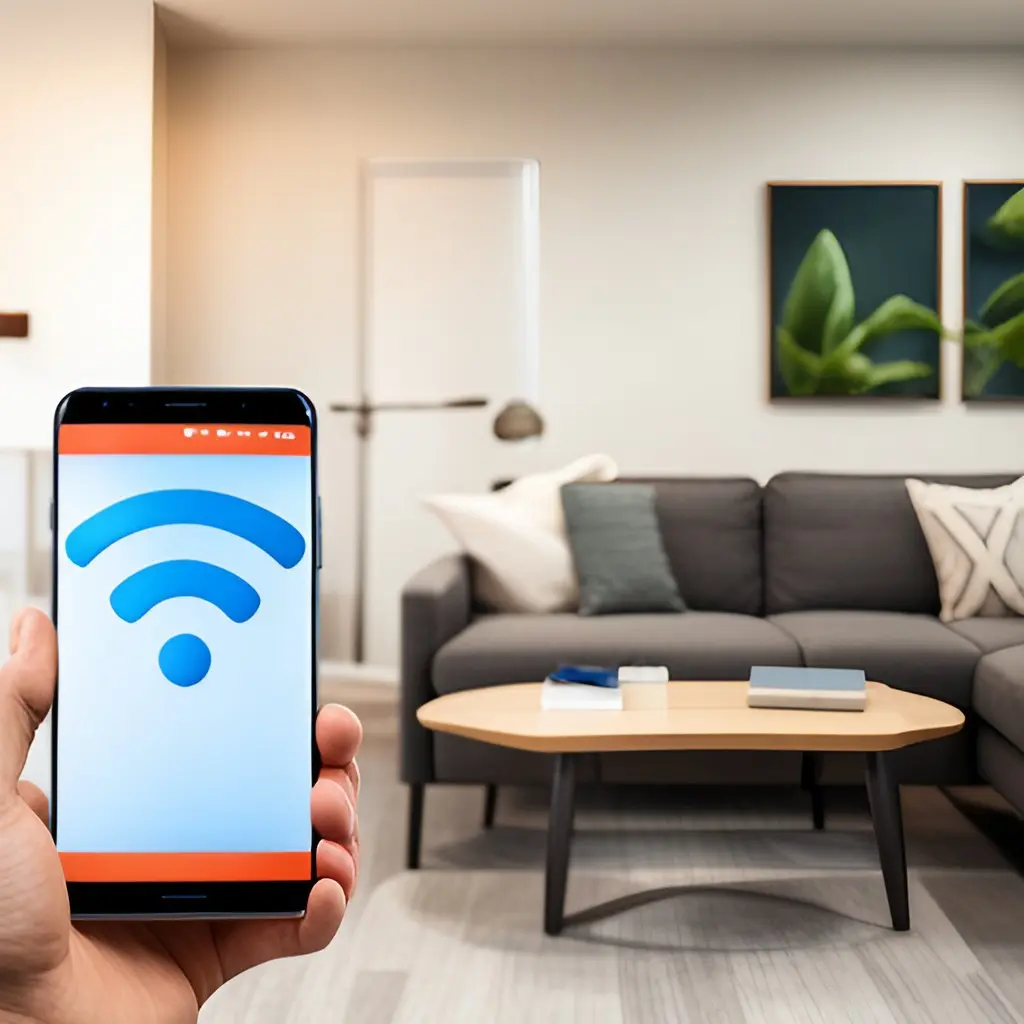Discovering and resolving Wi-Fi dead zones in your home: an in-depth guide for those well-versed in Wi-Fi routers seeking assistance in troubleshooting dead zones.
Wi-Fi dead zones are areas in your home where the Wi-Fi signal is weak or nonexistent. These dead zones can be frustrating for those who rely on a strong and stable internet connection, especially when trying to work or stream content. In this guide, we will discuss what causes Wi-Fi dead zones, how to identify them, and most importantly, how to fix them.
- Introduction
- Identifying Wi-Fi Dead Zones
- Wi-Fi Dead Zones: A Statistical Perspective
- Troubleshooting Wi-Fi Dead Zones
- Understanding the Causes of Wi-Fi Dead Zones and How Modern Routers Address Them
- Maintaining Your Wi-Fi Network for Consistent Coverage
- Overcoming Wi-Fi Limitations with Wired Connections
- Pro Tips for Maximizing Wi-Fi Coverage and Performance
- Conclusion
Introduction
Having access to a strong and stable Wi-Fi connection at home has become essential for many people, whether it’s for work, entertainment, or communication purposes.
However, even with the latest and most advanced routers, it’s common to encounter areas in your home where the Wi-Fi signal is weak or non-existent – also known as dead zones.
These dead zones can be frustrating, especially when you’re in the middle of an important video call or streaming your favorite show. But, with the right knowledge and tools, you can easily troubleshoot and fix these Wi-Fi dead zones in your home.
Identifying Wi-Fi Dead Zones
Before we dive into troubleshooting, it’s essential to first identify the areas in your home that have weak or no Wi-Fi signal. This can be done by conducting a Wi-Fi survey using various tools available online, such as Wi-Fi analyzer apps or software.
You can also manually walk around your home with your device connected to the Wi-Fi network and note down any areas where the signal is weak or non-existent. These are most likely your dead zones.
To thoroughly identify Wi-Fi dead zones, you will need:
- A device connected to your Wi-Fi, such as a smartphone or a laptop.
- A Wi-Fi analyzer app or software. There are many free options available online.
- A notepad or an equivalent app on your device to take notes.
While conducting the Wi-Fi survey, keep the following points in mind:
- Ensure your device is connected to the Wi-Fi network you want to examine.
- Use your device to roam around different areas of your house.
- Pay attention to any sudden drops in the Wi-Fi signal.
- Note down the specific spots where the Wi-Fi signal is weak or non-existent.
In the next section, we will delve into the strategies for troubleshooting these dead zones and improving your home Wi-Fi coverage.

Wi-Fi Dead Zones: A Statistical Perspective
Wi-Fi dead zones are surprisingly common in average-sized homes. The following are some statistics that shed light on the prevalence and impact of Wi-Fi dead zones:
- According to a survey by the Wi-Fi Alliance, more than half of global internet users experience insufficient Wi-Fi coverage in their homes.
- A standard Wi-Fi router can cover about 1,500 square feet in an open space. This coverage, however, can significantly diminish in real-world conditions due to obstructions like walls and floors.
- Research by TP-Link indicates that an average three-bedroom house typically has at least two Wi-Fi dead zones.
- The same study found that the most common places for dead zones are often the furthest from the router, such as bedrooms and basements.
- A more recent study by Eero found that users with their Wi-Fi router located in a central area of their home experience 50% fewer dead zones.
These statistics highlight the importance of strategic router placement and the potential need for Wi-Fi extenders or mesh networks, especially in larger homes, to ensure comprehensive coverage.
Troubleshooting Wi-Fi Dead Zones
There are several possible reasons for Wi-Fi dead zones in your home, such as physical barriers, outdated routers, or interference from other electronic devices. The following strategies will help you troubleshoot and fix these issues:
1. Position Your Router Strategically
The placement of your router plays a crucial role in determining the strength and coverage of your Wi-Fi signal.
- Ideally, it should be placed in a central location, away from any physical barriers that can obstruct the signal, such as walls or furniture.
- Elevating the router off the ground and positioning its antennas vertically can also help improve its range.
Experiment with different positions for your router until you find one that provides better coverage for your entire home.
2. Update Your Router’s Firmware
Outdated firmware can lead to poor Wi-Fi performance. Make sure your router’s firmware is up-to-date by visiting the manufacturer’s website or using their dedicated app. Here are the general steps:
- Log into your router’s admin panel.
- Locate the firmware update option.
- Follow the prompts to download and install any available updates.
3. Change Wi-Fi Channels
If you’re in a crowded area, other Wi-Fi networks could be interfering with yours, causing dead zones. Most routers automatically choose a channel, but these auto-selected channels can become congested. Try switching to a less congested channel manually.
- Access your router’s admin panel.
- Navigate to Wi-Fi settings.
- Select a different channel and save changes.
4. Use a Wi-Fi Extender
A Wi-Fi extender, also known as a repeater or booster, can help extend the range of your Wi-Fi network, covering areas that were initially dead zones.
- Place the extender halfway between your router and the dead zone.
- Follow the manufacturer’s instructions to set up and connect the extender to your Wi-Fi network.
5. Upgrade Your Router
If you’ve tried all the above steps and still have dead zones, it might be time to upgrade your router, especially if it’s older than five years. Modern routers are more powerful and come with features like mesh networking, which could significantly improve your Wi-Fi coverage.
Check out: TP-Link AX1800 WiFi 6 Router (Archer AX21) Pros and Cons
In the next section, we will explain how to prevent Wi-Fi dead zones from reoccurring in your home. Remember, maintaining reliable Wi-Fi coverage requires constant vigilance and occasional troubleshooting.
Understanding the Causes of Wi-Fi Dead Zones and How Modern Routers Address Them
Wi-Fi dead zones are often caused by factors such as physical obstructions, interference from other electronic devices, and the distance from the router.
1. Physical Obstructions
Typically, Wi-Fi signals spread outwards in all directions from your router. However, physical obstructions like walls, doors, and large pieces of furniture can block or weaken these signals.
Building materials can also have an impact; for instance, signals pass more easily through wooden structures than through brick or concrete.
2. Interference
Other electronic devices and appliances, such as microwaves, cordless phones, and baby monitors, can emit electromagnetic waves that interfere with Wi-Fi signals.
This interference can disrupt Wi-Fi connectivity, particularly when these devices are in close proximity to your router.
3. Distance
The further you move away from your router, the weaker the Wi-Fi signal becomes. If your Wi-Fi signal has to cover a long distance or multiple floors in a building, it’s more likely to have dead zones.
Modern routers have been designed to mitigate the impact of these issues.
How Modern Routers Resolve These Issues
Beamforming Technology
This technology allows the router to focus its signals towards the devices that are connected to it rather than broadcasting in all directions.
This focused approach can enhance the signal strength and reach devices located further away, reducing dead zones.
Tri-Band Wi-Fi
Tri-band Wi-Fi uses one 2.4GHz band and two 5GHz bands. This allows more devices to connect to your Wi-Fi network without causing congestion, improving the overall speed and performance.
Mesh Networking
Mesh routers consist of multiple units that work together to create a single, unified Wi-Fi network that covers your entire home. They intelligently route traffic, ensuring that the devices get a signal from the unit they’re closest to, thereby improving signal strength and reducing dead zones.
Wi-Fi 6
Wi-Fi 6 routers come equipped with advanced technologies like OFDMA and MU-MIMO, offering faster speeds, greater range, and better handling of multiple devices simultaneously. This can significantly diminish Wi-Fi dead zones in your home.
By understanding the root causes of Wi-Fi dead zones and choosing routers that feature modern technologies, you can significantly improve your home Wi-Fi coverage and experience.

Maintaining Your Wi-Fi Network for Consistent Coverage
Ongoing maintenance of your home Wi-Fi network is crucial for ensuring consistent coverage and avoiding the return of dead zones.
1. Regular Firmware Updates
Keep your router’s firmware up-to-date to ensure optimum performance.
2. Periodic Router Placement Evaluation
As you move or add devices in your home, periodically evaluate and adjust router placement as needed.
3. Monitor Interference Sources
Be aware of new appliances or devices that could be causing interference and adjust their location or your router’s location accordingly.
For safety, read: How To Secure Your Home WiFi Network
Overcoming Wi-Fi Limitations with Wired Connections
Explore how wired connections can supplement Wi-Fi for an integrated, seamless home network experience.
1. Ethernet Cables
Understand when and how to use Ethernet cables for a more stable, high-speed connection, ideal for demanding tasks like gaming or streaming.
2. Powerline Adapters
Discover how powerline adapters use your home’s electrical wiring to transmit data, overcoming physical barriers that hinder Wi-Fi signals.
Pro Tips for Maximizing Wi-Fi Coverage and Performance
To wrap up, here are some additional expert tips to help you maintain an optimal Wi-Fi network and minimize dead zones.
1. Consider Dual Band Support
If your devices support dual-band connectivity, make sure to enable it on your router. This allows devices to switch between 2.4GHz and 5GHz bands based on which one offers better performance.
2. Manage Bandwidth-Hungry Applications
Keep an eye on applications that consume a lot of bandwidth. Streaming services, online gaming, and video conferencing can slow down your network if they’re all used at the same time. Set these to run on lower settings or schedule their use to avoid network congestion.
3. Use Quality of Service (QoS)
Some routers have Quality of Service settings that allow you to prioritize bandwidth for certain devices or applications. This can be useful for ensuring that high-priority tasks, like work video calls or online classes, have the bandwidth they need.
4. Regular Network Check-ups
Just like a regular health check-up, your Wi-Fi network also needs periodic assessments. Use a network analyzer tool to perform regular check-ups and identify potential issues before they turn into major problems.
5. Invest in a Good Router
While it may be tempting to save money on a cheaper router, investing in a high-quality router can provide better performance, more features, and better long-term value.
Remember, the key to maintaining a robust and reliable Wi-Fi network is ongoing monitoring and proactive management.
Conclusion
To sum up, having stable and robust Wi-Fi coverage at home can significantly enhance your online activities, whether for work, education, or entertainment.
The guide has provided an in-depth exploration of the common causes of Wi-Fi dead zones at home, from physical obstructions and interference, to distance limitations. It underscored the crucial role of modern router technologies – beamforming, tri-band Wi-Fi, mesh networking, and Wi-Fi 6 – in mitigating these issues.
Maintaining your Wi-Fi network through regular firmware updates, periodic router placement evaluation, and monitoring of interference sources was emphasized. The guide also introduced wired connections as a possible complement to Wi-Fi for an integrated, seamless home network experience.
Finally, a number of expert tips were provided to maximize Wi-Fi coverage and performance, including considering dual-band support, managing bandwidth-hungry applications, using Quality of Service settings, performing regular network check-ups, and investing in a good router. Remember, ensuring a reliable Wi-Fi network requires ongoing monitoring and proactive management.

I’m J.S., I created and am the content manager at DIYHouseSkills.com. I do the research and write the articles that appear on this website. I’ve learned many household skills during my life and think it’s important to at least know the basics so that you can save yourself time and money… READ FULL BIO >
- Self-Watering Gardens for Small Spaces: Grow Big in Tiny Places
- How To Conserve Water At Home | How Can I Lower My Water Bill?
- Outdoor Pizza Oven Buying Guide | How to Buy
- Top Stand Mixers on Amazon: Most Wished For
- Samsung Robot Vacuum Troubleshooting + Advice
- One-Piece vs. Two-Piece Toilets: Making the Right Choice
- Must-Have Countertop Ice Makers: Efficient Solutions for Every Home
- Instant Pot Problems, Best Guide To Fix
